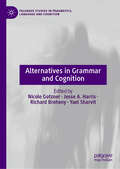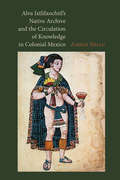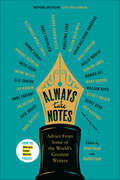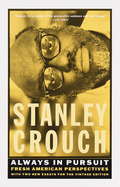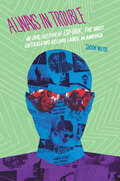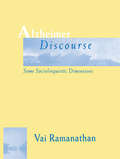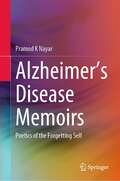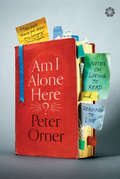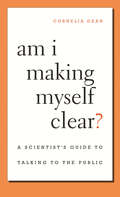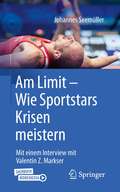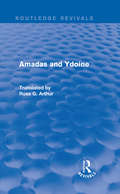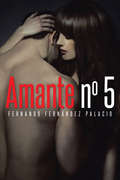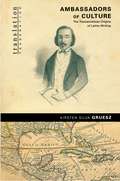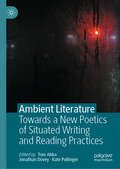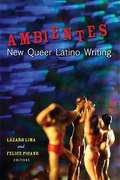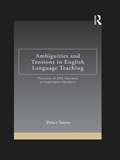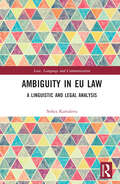- Table View
- List View
Alternatives in Grammar and Cognition (Palgrave Studies in Pragmatics, Language and Cognition)
by Nicole Gotzner Richard Breheny Jesse A. Harris Yael SharvitThis edited book brings together research investigating foundational issues relating to the generation and restriction of alternative sets from theoretical and empirical perspectives. It includes contributions from noted scholars in the field to provide theoretical arguments, opinionated perspectives synthesizing existing positions, and empirical evidence from experimentation and fieldwork in support of a theoretical framework. Alternatives have come to occupy a central place in formal semantic theory, and are referenced in notable accounts of various phenomena, including focus, negation, implicature, modality, counterfactuals, and contrastive topics, among others. More recently, experimental investigations have addressed the mental activation and availability of alternatives in sentence comprehension and memory representations, finding that alternative meanings are computed during incremental processing, and persist in memory after sentence completion for a limited amount of time. The diverse perspectives represented in this volume will serve to clarify and guide the major avenues available in future research on the topic, and the book will be of interest to graduate students and researchers in fields such as linguistics (especially psycholinguistics and experimental pragmatics), philosophy and cognitive science.
Alva Ixtlilxochitl's Native Archive and the Circulation of Knowledge in Colonial Mexico
by Amber BrianModern Language Association's Katherine Singer Kovacs Prize, Honorable Mention, 2016 Born between 1568 and 1580, Alva Ixtlilxochitl was a direct descendant of Ixtlilxochitl I and Ixtlilxochitl II, who had been rulers of Texcoco, one of the major city-states in pre-Conquest Mesoamerica. After a distinguished education and introduction into the life of the empire of New Spain in Mexico, Ixtlilxochitl was employed by the viceroy to write histories of the indigenous peoples in Mexico. Engaging with this history and delving deep into the resultant archives of this life's work, Amber Brian addresses the question of how knowledge and history came to be crafted in this era. Brian takes the reader through not only the history of the archives itself, but explores how its inheritors played as crucial a role in shaping this indigenous history as the author. The archive helped inspire an emerging nationalism at a crucial juncture in Latin American history, as Creoles and indigenous peoples appropriated the history to give rise to a belief in Mexican exceptionalism. This belief, ultimately, shaped the modern state and impacted the course of history in the Americas. Without the work of Ixtlilxochitl, that history would look very different today.
Alva Ixtlilxochitl’s Native Archive and the Circulation of Knowledge in Colonial Mexico
by Amber BrianBorn between 1568 and 1580, Alva Ixtlilxochitl was a direct descendant of Ixtlilxochitl I and Ixtlilxochitl II, who had been rulers of Texcoco, one of the major city-states in pre-Conquest Mesoamerica. After a distinguished education and introduction into the life of the empire of New Spain in Mexico, Ixtlilxochitl was employed by the viceroy to write histories of the indigenous peoples in Mexico. Engaging with this history and delving deep into the resultant archives of this life's work, Amber Brian addresses the question of how knowledge and history came to be crafted in this era.Brian takes the reader through not only the history of the archives itself, but explores how its inheritors played as crucial a role in shaping this indigenous history as the author. The archive helped inspire an emerging nationalism at a crucial juncture in Latin American history, as Creoles and indigenous peoples appropriated the history to give rise to a belief in Mexican exceptionalism. This belief, ultimately, shaped the modern state and impacted the course of history in the Americas. Without the work of Ixtlilxochitl, that history would look very different today.
Always Get the Name of the Dog: A Guide to Media Interviewing
by Nicole KraftAlways Get the Name of the Dog is a guide to journalistic interviewing, written by a journalist, for journalists. It features advice from some of the best writers and reporters in the business, and takes a comprehensive view of media interviewing across multiple platforms, while emphasizing active learning to give readers actionable steps to become great media interviewers. Through real scenarios and examples, this text takes future journalists through the steps of the interview, from research to source identification to question development and beyond. Whether you are a journalism student or an experienced reporter looking to sharpen your skills, this text can help make sure you get all you need from every interview you conduct.
Always Take Notes: Advice from Some of the World's Greatest Writers
by Simon Akam and Rachel LloydIn this compendium of literary wisdom, celebrated authors share insights and anecdotes on the art of turning good stories into bestsellers. Simon Akam and Rachel Lloyd, hosts of the renowned podcast Always Take Notes, have spent years delving into the lives and minds of literary luminaries. Now they share the most illuminating and unforgettable interview moments, as writers from Irvine Welsh to Tracy Chevalier and Marlon James reveal the secrets to their success and the hard-earned lessons they've gathered in their remarkable careers. This volume serves as a beacon for both aspiring and established writers, discussing everything from finding inspiration to the trials and triumphs of getting your book published. It also offers a first-hand look into the daily challenges of writing and the critical habits that help writers persevere. Contributors include David Mitchell, Kate Mosse, Ian McEwan, Elif Shafak, Ruth Ozeki, Niall Ferguson, Howard Jacobson, William Boyd, Geoff Dyer, Max Hastings, and many others.
Always in Pursuit
by Stanley CrouchAs a cultural and political commentator, Stanley Crouch in unapologetically contentious and delightfully iconoclastic. Whether he is writing on the uniqueness of the American South, the death of Tupak Shakur, the O.J. Simpson verdict, or the damage done by the Oklahoma City bombing, Crouch's high-velocity exchange with American culture is conducted with scrupulous allegiance to the truth, even when it hurts--and it usually does. And on the subject of jazz--from Sidney Bechet to Billy Strayhorn, Duke Ellington to Miles Davis--there is no one more articulate, impassioned, and encyclopedic in his knowledge than Stanley Crouch. Crouch approaches everything in his path with head-on energy, restless intelligence, and a refreshing faith in the collective experiment that is America--and he does so in a virtuosic prose style that is never less than thrilling.From the Trade Paperback edition.learn from him."--Robert Pinsky, Poet Laureate"Stanley Crouch once again proves himself to be a major iconoclast. His words prick the pages, provoking, irritating, prodding us to question our own easy assumptions on race, sex, politics, art, jazz, history, civilization, you-name-it. His pursuit becomes our own, as we see our world through his bold eyes."--Linda Chavez"The essay on O. J. Simpson is among the most sensible and incisive writing from the mountain of commentary that that unfortunate case has produced. Crouch remains one of our most formidable social and literary critics." --Gerald Early"Always in Pursuit is everything I love about the brilliant Stanley Crouch. In his hands the essay becomes a great jazz riff on the page--social commentary rightly done as a singular 'I'. Written by a passionately determined believer in the American possibility, this collection of essays is wide ranging, fiercely opinionated, elegantly composed, purposefully challenging. Be prepared."--Marcia Gillespie, Editor-in-Chief, Ms. Magazine
Always in Trouble: An Oral History of ESP-Disk', the Most Outrageous Record Label in America (Music/Interview)
by Jason WeissYou never heard such sounds in your life In 1964, Bernard Stollman launched the independent record label ESP-Disk&’ in New York City to document the free jazz movement there. A bare-bones enterprise, ESP was in the right place at the right time, producing albums by artists like Albert Ayler, Pharoah Sanders, and Sun Ra, as well as folk-rock bands like the Fugs and Pearls Before Swine. But the label quickly ran into difficulties and, due to the politically subversive nature of some productions and sloppy business practices, it folded in 1974. Always in Trouble tells the story of ESP-Disk&’ through a multitude of voices—first Stollman&’s, as he recounts the improbable life of the label, and then the voices of many of the artists involved.
Alzheimer Discourse: Some Sociolinguistic Dimensions (Routledge Communication Series)
by Vai RamanathanThis book deals with the narrative discourse--specifically lifestories--of 16 patients suffering from Alzheimer's disease (AD). It attempts to understand the discourse of these patients in contextual terms. Thus far, the dominant explanation for "incoherence" in AD speech has been largely provided by research in psycholinguistics, much of which has understood AD speech in terms of the progressively deteriorating nature of the disease. This study provides a complementary view by examining ways in which some social factors--audiences, setting, and time--influence the extensiveness and meaningfulness of AD talk. By offering both an examination of interactions across the data as well as analyzing particular cases in detail, this unusual study attempts to juxtapose some general insights regarding AD discourse with case-specific ones. Sociolinguistic analyses of the data demonstrate how certain audiences and particular settings set in motion discourse activities that either facilitate the patients' ability to recall their pasts or impede it. This analysis also includes a critical look at the researcher's contribution in negotiating and reinforcing these activities. Ethnographic details about the social worlds of some of these patients shed light on how larger social contexts at least indirectly contribute to exacerbating the patients' conditions or stabilizing them. The analyses of both context and language provides a more global understanding of the Alzheimer experience. This study also discusses some interactional strategies by which professionals can begin to engage AD patients in meaningful talk as well as ways by which they can better "hear" AD patients' cues at narrating. Throughout, this book underscores the need to factor in social factors when making assessments regarding AD patients' communicative abilities.
Alzheimer's Disease Memoirs: Poetics of the Forgetting Self
by Pramod K NayarThis book examines writings by people living with Alzheimer's Disease and their caregivers. Its focus areas include the construction of the self in the face of diminishing linguistic and cognitive abilities, the stigmatization of ageing, the various narrative strategies that these texts (often collaborative) employ, the health activism and advocacy generated via a 'biosociality,' and the ethics of care. It examines the 'disease writing' genre about a condition that ravages the ability to use language. It serves as a "literary" examination of the work done in this area through a critical reading of the memoirs of those with AD and caregivers and a healthy dose of literary theory. The book is a valuable resource for those interested in literary and critical theory and researchers in the field of ageing/dementia studies.
Alzheimer’s Disease in Contemporary U.S. Fiction: Memory Lost (Routledge Research in American Literature and Culture)
by Cristina GarrigósThis volume seeks to bring readers to a deeper understanding of contemporary cultural and social configurations of Alzheimer’s disease by analyzing 21st-century U.S. novels in which the disease plays a key narrative role. Via analysis of selected works, Garrigós considers how the erasure of memory in a person with Alzheimer’s affects our idea of the identity of that person and their sense of belonging to a group. Starting out from three different types of memory (individual, social and cultural), the study focuses on the narrative strategies that authors use to configure how the disease is perceived and represented. This study is significant not only because of what the texts reveal about those with Alzheimer’s, but also for what they say about us - about the authors and readers who are producing and consuming these texts, about how we see this disease, and what our attitudes to it say about contemporary U.S. society.
Am I Alone Here?: Notes on Living to Read and Reading to Live
by Peter Orner"Stories, both my own and those I've taken to heart, make up whoever it is that I've become," Peter Orner writes in this collection of essays about reading, writing, and living. Orner reads-and writes-everywhere he finds himself: a hospital cafeteria, a coffee shop in Albania, or a crowded bus in Haiti. The result is "a book of unlearned meditations that stumbles into memoir." Among the many writers Orner addresses are Isaac Babel and Zora Neale Hurston, both of whom told their truths and were silenced; Franz Kafka, who professed loneliness but craved connection; Robert Walser, who spent the last twenty-three years of his life in a Swiss insane asylum, "working" at being crazy; and Juan Rulfo, who practiced the difficult art of silence. Virginia Woolf, Eudora Welty, Yasunari Kawabata, Saul Bellow, Mavis Gallant, John Edgar Wideman, William Trevor, and Václav Havel make appearances, as well as the poet Herbert Morris-about whom almost nothing is known.An elegy for an eccentric late father, and the end of a marriage, Am I Alone Here? is also a celebration of the possibility of renewal. At once personal and panoramic, this book will inspire readers to return to the essential stories of their own lives.
Am I Making Myself Clear?: A Scientist's Guide to Talking to the Public
by Cornelia DeanWhat we don’t know can hurt us—and does so every day. Climate change, health care policy, weapons of mass destruction, an aging infrastructure, stem cell research, endangered species, space exploration—all affect our lives as citizens and human beings in practical and profound ways. But unless we understand the science behind these issues, we cannot make reasonable decisions—and worse, we are susceptible to propaganda cloaked in scientific rhetoric. To convey the facts, this book suggests, scientists must take a more active role in making their work accessible to the media, and thus to the public. In Am I Making Myself Clear? Cornelia Dean, a distinguished science editor and reporter, urges scientists to overcome their institutional reticence and let their voices be heard beyond the forum of scholarly publication. By offering useful hints for improving their interactions with policymakers, the public, and her fellow journalists, Dean aims to change the attitude of scientists who scorn the mass media as an arena where important work is too often misrepresented or hyped. Even more important, she seeks to convince them of the value and urgency of communicating to the public. Am I Making Myself Clear? shows scientists how to speak to the public, handle the media, and describe their work to a lay audience on paper, online, and over the airwaves. It is a book that will improve the tone and content of debate over critical issues and will serve the interests of science and society.
Am I?
by Wiley Blevins Shirley BeckesPhonics Readers is a recognized leader in helping you teach phonics and phonemic awareness, within the context of content-area reading. Content area focus: Jobs; Phonics Skills: short a, f, m, t
Am Limit – Wie Sportstars Krisen meistern: Mit einem Interview mit Valentin Z. Markser
by Johannes SeemüllerMedaillen und Titel sind die Währung erfolgreicher Sportler. Wer ganz oben steht, wird von den Medien zum Star gemacht und von den Fans verehrt. Hierfür gehen Leistungssportler an ihre körperlichen und mentalen Grenzen – und oft darüber hinaus. In diesem Buch erzählen Olympiasieger, Weltmeister und Champions League-Sieger durch exklusiv geführte Interviews über ihre Leidenschaft für den Sport. Sie berichten aber auch ungeschminkt über die Schattenseiten. Leistungsdruck, Burnout, Schmerzen, Magersucht, Depressionen, Ängste – nichts ist ihnen fremd. Gerald Asamoah · Matthias Behr · Karla Borger · Timo Hildebrand · Ottmar Hitzfeld · Clara Klug · Michael Köllner · Dominik Nerz · Elisabeth Seitz · Frank Stäbler · Kristina Vogel Selten sprachen Spitzensportler so offen darüber, wie sie mit Rückschlägen und Krisen umgegangen sind. Das Buch enthält abrufbare Videoausschnitte aus den geführten Gesprächen. Ergänzt werden die Porträts durch ein ausführliches Interview mit Dr. Valentin Z. Markser, einem der renommiertesten deutschen Sportpsychiater.
Amadas and Ydoine (Routledge Revivals)
by Ross G. ArthurThis translation, first published in 1993, presents a little-known medieval romance to readers who do not know Old French, or who are generally unfamiliar with the literature of the Middle Ages. Probably composed between 1190 and 1220, the major interest of Amadas and Ydoine to modern readers is that its basic structure is unflinchingly conventional, its plot is predictable yet charming, and its social and moral attitudes reflect the context in which it was produced. The poet explores how love, chivalry and martial prowess can translate a would-be knight into a powerful lord. Its purpose is largely that of wish-fulfilment for young men, and as such it is highly indicative of the ethos surrounding marriage that prevailed in medieval French society.
Amante número cinco
by Fernando Fernández Palacio«Nuestro protagonista es una persona nihilista, tímida, ensimismada y atrapada por las angustias de la vida; por la congoja, por la náusea. Su amigo Luis, un intelectual atormentado y melancólico, lo llama para que le ayude a resolver un dilema que le golpea. Pero por su estado nostálgico no puede comunicárselo.» <P><P>Los males del espíritu alteran la comunicación. Aunque le hace saber que es un problema romántico, y más tarde, a petición del protagonista, se lo comunica por escrito. Luis está enamorado de Dirgni. <P>Descubre que es una mujer que tiene 3 amantes. Y él es el número cuatro. El protagonista se entusiasma tanto con la historia como con el tipo de mujer, y queriendo conocerla también se enamora de ella.
Amazing & Extraordinary Facts Sherlock Holmes
by Nicholas UtechinAmazing & Extraordinary Facts - Sherlock Holmesbrings to life the most celebrated fictional character in history, through all of Arthur Conan Doyle's 60 stories, to his transition onto stage, radio, television and the big screen that continues today, along with the actors who have played him. Every aspect of the pipe-smoking, deer stalked character is explored, including his relationships with Dr. Watson, his long-suffering landlady Mrs. Hudson, Scotland Yard detectives, and his nemesis Professor Moriarty, as well as Holmes' literary and musical tastes, bad habits, and his preferred disguises. Whether you enjoy the stories of Arthur Conan Doyle or the television shows and films that they have inspired, this latest title in theAmazing & Extraordinary Factsseries celebrates the timeless detective who continues to be a firm part of popular culture for generations to come.
Amazing & Extraordinary Facts: Sherlock Holmes
by Nicholas UtechinAmazing & Extraordinary Facts: Sherlock Holmes brings to life the most celebrated fictional character in history, through all of Arthur Conan Doyle's 59 stories, to his transition onto stage, radio, television and the big screen that continues today, along with the actors who have played him.Every aspect of the pipe-smoking, deer stalkered character is explored, including his relationships with Dr Watson, his long-suffering landlady Mrs Hudson, Scotland Yard detectives, and his nemesis Professor Moriarty, as well as Holmes' literary and musical tastes, bad habits, and his preferred disguises.Whether you enjoy the stories of Arthur Conan Doyle or the television shows and films that they have inspired, this latest title in the Amazing & Extraordinary Facts series celebrates the timeless detective who will continue to be a firm part of popular culture for generations to come.
Amazing Place
by Marianne GingherSome of us understand place in terms of family and community, landscape, or even the weather. For others, the idea of place becomes more distinct and particular: the sound of someone humming while washing dishes, the musical cadence of a mountain accent, the smell of a tobacco field under the hot Piedmont sun. Some of North Carolina's finest writers ruminate on the meaning of place in this collection of twenty-one original essays, untangling North Carolina's influence on their work, exploring how the idea of place resonates with North Carolinians, and illuminating why the state itself plays such a significant role in its own literature.Authors from every region of North Carolina are represented, from the Appalachians and the Piedmont to the Outer Banks and places in between. Amazing Place showcases a mix of familiar favorites and newer voices, expressing in their own words how North Carolina shapes the literature of its people.Contributors include Rosecrans Baldwin, Will Blythe, Belle Boggs, Fred Chappell, Jan DeBlieu, Pamela Duncan, Clyde Edgerton, Ben Fountain, Marianne Gingher, Judy Goldman, Stephanie Elizondo Griest, Randall Kenan, Jill McCorkle, Michael McFee, Lydia Millet, Robert Morgan, Jenny Offill, Michael Parker, Bland Simpson, Lee Smith, Wells Tower, and Monique Truong.
Amazons in America: Matriarchs, Utopians, and Wonder Women in U.S. Popular Culture
by Keira V. WilliamsWith this remarkable study, historian Keira V. Williams shows how fictional matriarchies—produced for specific audiences in successive eras and across multiple media—constitute prescriptive, solution-oriented thought experiments directed at contemporary social issues. In the process, Amazons in America uncovers a rich tradition of matriarchal popular culture in the United States. Beginning with late-nineteenth-century anthropological studies, which theorized a universal prehistoric matriarchy, Williams explores how representations of women-centered societies reveal changing ideas of gender and power over the course of the twentieth century and into the present day. She examines a deep archive of cultural artifacts, both familiar and obscure, including L. Frank Baum’s The Wizard of Oz series, Progressive-era fiction like Charlotte Perkins Gilman’s utopian novel Herland, the original 1940s Wonder Woman comics, midcentury films featuring nuclear families, and feminist science fiction novels from the 1970s that invented prehistoric and futuristic matriarchal societies. While such texts have, at times, served as sites of feminist theory, Williams unpacks their cyclical nature and, in doing so, pinpoints some of the premises that have historically hindered gender equality in the United States. Williams also delves into popular works from the twenty-first century, such as Tyler Perry’s Madea franchise and DC Comics/Warner Bros.’ globally successful film Wonder Woman, which attest to the ongoing presence of matriarchal ideas and their capacity for combating patriarchy and white nationalism with visions of rebellion and liberation. Amazons in America provides an indispensable critique of how anxieties and fantasies about women in power are culturally expressed, ultimately informing a broader discussion about how to nurture a stable, equitable society.
Ambassadors of Culture: The Transamerican Origins of Latino Writing (Translation/Transnation #44)
by Kirsten Silva GrueszThis polished literary history argues forcefully that Latinos are not newcomers in the United States by documenting a vast network of Spanish-language cultural activity in the nineteenth century. Juxtaposing poems and essays by both powerful and peripheral writers, Kirsten Silva Gruesz proposes a major revision of the nineteenth-century U.S. canon and its historical contexts. Drawing on previously unpublished archival materials and building on an innovative interpretation of poetry's cultural role, Ambassadors of Culture brings together scattered writings from the borderlands of California and the Southwest as well as the cosmopolitan exile centers of New York, New Orleans, and San Francisco. It reads these productions in light of broader patterns of relations between the U.S. and Latin America, moving from the fraternal rhetoric of the Monroe Doctrine through the expansionist crisis of 1848 to the proto-imperialist 1880s. It shows how ''ambassadors of culture'' such as Whitman, Longfellow, and Bryant propagated ideas about Latin America and Latinos through their translations, travel writings, and poems. In addition to these well-known figures and their counterparts in the work of nation-building in Cuba, Mexico, and Central and South America, this book also introduces unremembered women writers and local poets writing in both Spanish and English. In telling the almost forgotten early history of travels and translations between U.S. and Latin American writers, Gruesz shows that Anglo and Latino traditions in the New World were, from the beginning, deeply intertwined and mutually necessary.
Ambient Literature: Towards a New Poetics of Situated Writing and Reading Practices
by Kate Pullinger Tom Abba Jonathan DoveyThis book considers how a combination of place-based writing and location responsive technologies produce new kinds of literary experiences. Building on the work done in the Ambient Literature Project (2016–2018), this books argues that these encounters constitute new literary forms, in which the authored text lies at the heart of an embodied and mediated experience. The visual, sonic, social and historic resources of place become the elements of a live and emergent mise-en-scène. Specific techniques of narration, including hallucination, memory, history, place based writing, and drama, as well as reworking of traditional storytelling forms combine with the work of app and user experience design, interaction, software authoring, and GIS (geographical information systems) to produce ambient experiences where the user reads a textual and sonic literary space. These experiences are temporary, ambiguous, and unpredictable in their meaning but unlike the theatre, the gallery, or the cinema they take place in the everyday shared world. The book explores the potentiality of a new literary form produced by the exchange between location-aware cultural objects, writers and readers. This book, and the work it explores, lays the ground for a new poetics of situated writing and reading practices.
Ambientes: New Queer Latino Writing
by Felice Picano Lazaro LimaAs the U.S. Latino population grows rapidly, and as the LGBTQ Latino community becomes more visible and a more crucial part of our literary and artistic heritage, there is an increasing demand for literature that successfully highlights these diverse lives. Edited by Lázaro Lima and Felice Picano, Ambientes is a revolutionary collection of fiction featuring stories by established authors as well as emerging voices that present a collective portrait of gay, lesbian, bisexual, and transgender experience in America today. With a preface by Picano and an introduction by Lima that sets the stage for understanding Latino literary and cultural history, this is the first anthology to cross cultural and regional borders by offering a wide variety of urban, rural, East Coast, West Coast, and midwestern perspectives on Latina and Latino queers from different walks of life. Stories range from sensual pieces to comical romances and from inner-city dramas fueled by street language to portraits of gay domesticity, making this a much-needed collection for many different kinds of readers. The stories in this collection reflect a vibrant and creative community and redefine received notions of “gay” and “lesbian.”
Ambiguities and Tensions in English Language Teaching: Portraits of EFL Teachers as Legitimate Speakers (ESL & Applied Linguistics Professional Series)
by Peter SayerThe central theme of this book is the ambiguities and tensions teachers face as they attempt to position themselves in ways that legitimize them as language teachers, and as English speakers. Focusing on three EFL teachers and their schools in the southern Mexican state of Oaxaca, it documents how ordinary practices of language educators are shaped by their social context, and examines the roles, identities, and ideologies that teachers create in order to navigate and negotiate their specific context. It is unique in bringing together several current theoretical and methodological developments in TESOL and applied linguistics: the performance of language ideologies and identities, critical TESOL pedagogy and research, and ethnographic methods in research on language learning and teaching. Balancing and blending descriptive reporting of the teachers and their contexts with a theoretical discussion which connects their local concerns and practices to broader issues in TESOL in international contexts, it allows readers to appreciate the subtle complexities that give rise to the “tensions and ambiguities” in EFL teachers’ professional lives.
Ambiguity in EU Law: A Linguistic and Legal Analysis (Law, Language and Communication)
by Sofiya KartalovaAmbiguity – an expression or utterance giving rise to at least two mutually exclusive interpretations – has been traditionally regarded as an ever-present, and therefore trivial, feature of EU law, alongside other forms of linguistic indeterminacy. At the same time, ambiguity has been condemned as a perilous defect in the legal text, since it is commonly assumed that the Court of Justice of the EU (CJEU) would necessarily exploit it to engage in judicial activism. In contrast, more recent theories present ambiguity as a means of promoting greater acceptability and coherence, while trusting the CJEU’s willingness to exert judicial restraint for the benefit of judicial co-operation. This ground-breaking work challenges some of the theoretical assumptions about ambiguity in EU law and puts forward a more accurate and complete theory about the CJEU’s strategic use of ambiguity. Ambiguity is here transformed from an underestimated or misunderstood detail of undetermined significance to a desirable systemic feature of the EU legal order with concrete properties and impact. Ambiguity as the implicit basis of the CJEU’s decision-making is shown to be strategically valuable for the implementation of the authority of EU law at some of the most pivotal moments in the evolution of the EU legal order. This interdisciplinary investigation presents in-depth linguistic and legal analysis of ambiguity found in the text of key provisions of EU Treaties and in the language of some of the CJEU’s leading preliminary rulings in the area of fundamental rights, freedom of movement and EU citizenship. The book suggests a categorisation of examples, basic guidance about the type of case and situation where the phenomenon is likely to emerge as well as an assessment of the advantages and disadvantages of this unusual judicial technique. The book will be a valuable resource for researchers and academics working in the areas of Law and Language, Public International Law, EU Law and Multilingualism.
